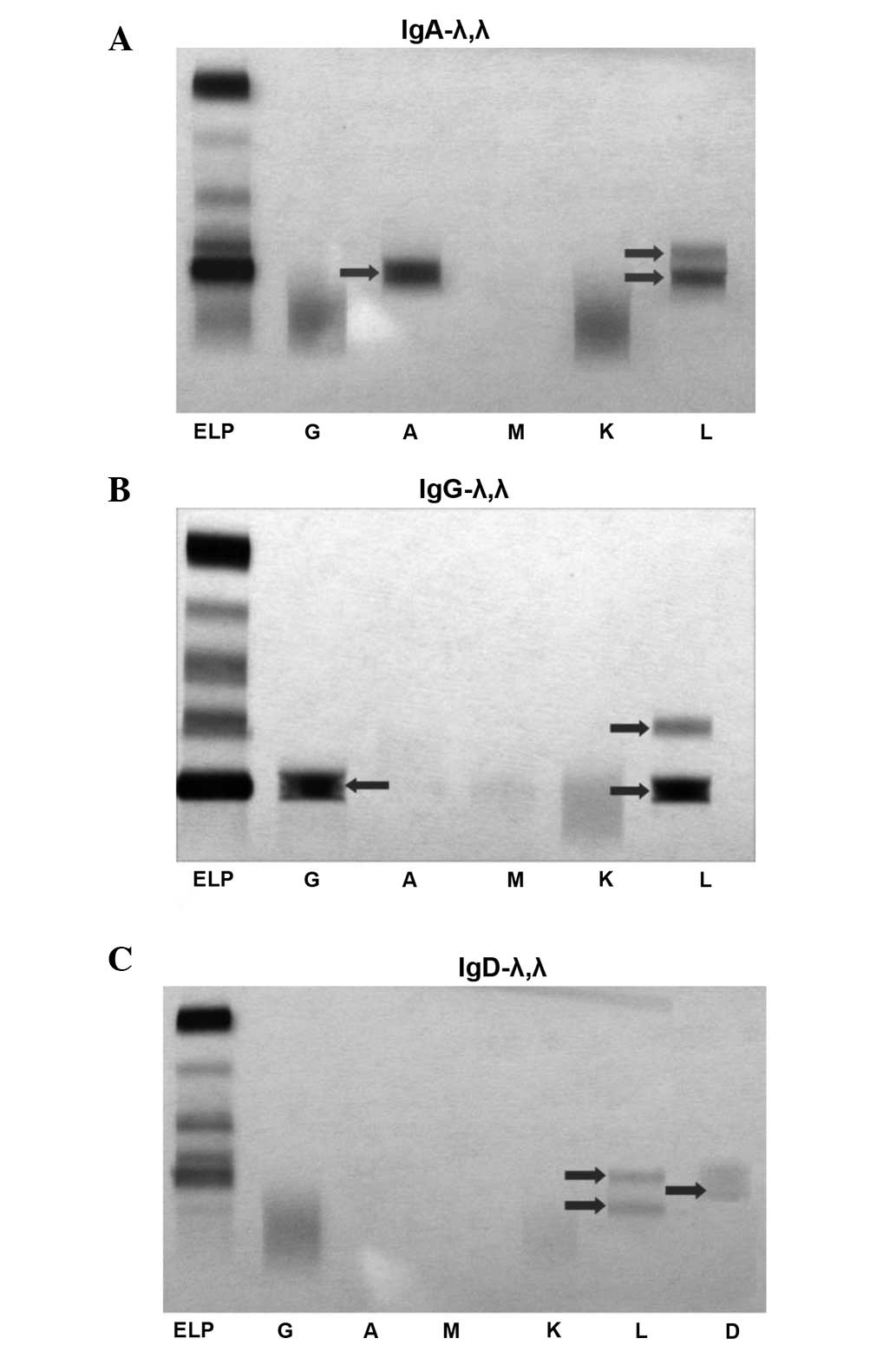Clinical characteristics of a group of patients with multiple myeloma who had two different λ light chains by immunofixation electrophoresis: A retrospective study from a single center
- Authors:
- Published online on: March 13, 2015 https://doi.org/10.3892/etm.2015.2352
- Pages: 1895-1900
Metrics: Total
Views: 0 (Spandidos Publications: | PMC Statistics: )
Total PDF Downloads: 0 (Spandidos Publications: | PMC Statistics: )
Abstract
The objective of the present study was to conduct a retrospective analysis of the clinical characteristics of a group of patients with multiple myeloma (MM) who had two different immunoglobulin λ light chains as determined by immunofixation electrophoresis (IFE). A total of 26 patients with MM had two different λ light chains by IFE at diagnosis in hospital from January 2006 to June 2012. Data were collected from the medical records of these patients. The clinical characteristics, laboratory parameters, responses, risk factors and outcomes of this special group of patients were retrospectively analyzed. The patients with MM and two different λ light chains by IFE accounted for 5.4% (26/483) of all the patients with MM during the same period. There were 17 patients (65.4%) with renal dysfunction and 10 patients (38.5%) with extramedullary plasmacytoma (EMP) at diagnosis. Ten patients (38.5%) had abnormalities by fluorescence in situ hybridization (FISH) including t(4;14), t(14;16) and/or del17p. Of these patients, three (11.5%) achieved complete remission (CR), six (23.1%) very good partial remission (VGPR), six (23.1%) partial remission (PR) and the overall remission (OR) rate was 57.7% (15/26). The OR rate of the patients who received chemotherapy with bortezomib was superior to that of the patients who received chemotherapy without bortezomib (78.6% vs. 33.3%; P<0.05). The OR rate of the patients who received autologous stem cell transplantation (SCT) was superior to that of the patients who did not receive autologous SCT (77.8% vs. 47.1%; P<0.05). The median overall survival (OS) was 12.6 months (range, 2‑38 months) in this study. The patients who received chemotherapy with bortezomib had a significantly longer median OS as compared with the patients who received chemotherapy without bortezomib (19 vs. 6 months; P=0.049). The patients who received autologous SCT also had significantly longer median OS as compared with the patients who did not receive autologous SCT (18 vs. 7 months; P=0.041). The median duration of remission (DOR) was 5 months (range, 0‑28 months). The patients who received bortezomib or autologous SCT had significantly longer median DOR than those who did not (P=0.046 and P=0.012, respectively). The patients with abnormalities by FISH had similar OR rates, median OS and median DOR as compared with the patients without abnormalities by FISH and there was no statistically significant difference in OR rate, median OS and median DOR between the patients with EMP and those without. The MM patients with two different λ light chains by IFE may have specific characteristics, and are accompanied by a high incidence of renal dysfunction and EMP. They have a poor prognosis and require novel therapy including bortezomib and autologous SCT.












